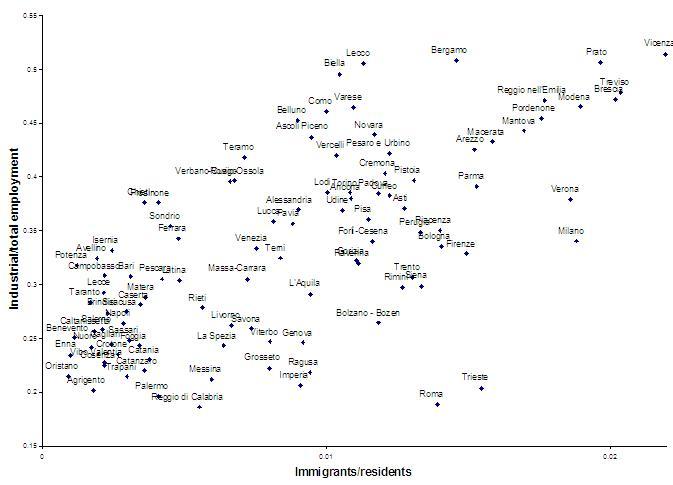Technological advances have resulted in the global fragmentation of production processes: thanks to information, telecommunication, and transportation technologies, firms make finished products that combine inputs from many locations. Often, the final good is the result of blueprints and marketing plans prepared in rich countries combined with nuts and bolts assembled in poor countries. Such “offshoring” of labour-intensive production tasks has much in common with immigration: both are profitable because labour is relatively well paid in the region from which firms delocate or to which immigrants come.
With immigration, manufacturing plants stay put and foreign workers arrive to replace local workers in production jobs, but well paid jobs in other taks may become available to locals. With offshoring, foreigners stay put and manufacturing plants move, but some manufacturing, planning, and headquarters activities remain in the home economy. If immigration were impossible and headquarters were physically inseparable from production plants, all manufacturing would have to leave countries where labour is expensive.
Immigration and offshoring are signs of a region’s economic vitality, because they are driven by the fact that its residents enjoy high income. For example, consider the variation in economic conditions across Italian provinces. Immigration and offshoring, which are positively correlated, do not appear to be sources of misery. In places like Treviso or Vicenza in the North East, or in the textile district of Prato, many residents are immigrants and many firms offshore manufacturing of intermediates or finished products. But living conditions are arguably better there than in places like Agrigento in Sicily or Oristano in Sardinia, which very few immigrants choose as their destination, and from which little or no offshoring originates.
Productivity differences are the source of these conditions. Immigration and offshoring are positively correlated with indicators of local economies’ ability to compete globally, such as industrial employment. As Figure 1 shows, such correlations are particularly striking in Italy, where there is a strong positive relationship between the presence of immigrants and the share of labourers employed in industrial jobs. The large variation in the percentage of industrial jobs available is not driven by the employment of immigrants, who are only one or two percent of the population in most regions. Italian provinces with viable manufacturing sectors attract immigrants, and immigrants contribute to these sectors, making them more viable.
Figure 1 Industrial employment and immigration to Italian provinces
Source: ISTAT, 2001 Census.
Resisting these economic forces is pointless, while adaptation is fruitful: as technological progress lowers the cost of transporting labour-intensive goods, accepting immigration and exploiting offshoring opportunities are ways to make “good jobs” available to local residents in an unavoidably globalised economy. Restricting immigration or discouraging offshoring (by tax instruments, for example) will, in the end, only damage competitiveness and drive rich economies into a dead end.
Other policy options are open, however, to address the distributional concerns associated with the efficiency gains brought about by these phenomena. Like immigration, offshoring of labour-intensive tasks decreases employment and wage opportunities for low-skilled workers in rich countries and increases the cost of welfare policies. To address distributional issues, rich countries’ policies should target skill building. To enhance efficiency, policymakers should try to strengthen the firm-level productivity advantages that underlie international activities by ensuring that exploitation of offshoring opportunities and integration of immigrants helps local socio-economic systems compete in the global economy.
Like all unexploited policy options, these are difficult and costly. Detailed empirical work can help inform them. In recent research, my co-authors and I examine the firm-level determinants of offshoring choices and their implications for immigrant employment. For example, we find that family firms are less inclined to offshore production and therefore tend to employ more immigrants. Italians expressing concern about immigration should therefore perhaps join liberal economists in advocating the modernisation of Italy’s corporate governance structure. Further investigation of offshoring, immigration, and their intersection will be crucial in aiding policymakers to best address today’s economic realities.
Footnotes
1 For an overview of the globalisation of production, see Richard Baldwin, “Globalisation: the great unbundling(s),” in Globalisation Challenges for Europe and Finland, 26 September 2006, and Alan Blinder, “Offshoring: The Next Industrial Revolution?” Foreign Affairs, March/April 2006.
2 G. Barba Navaretti, G. Bertola and A. Sembenelli (2008). “Offshoring and Immigrant Employment: Firm-level Theory and Evidence,” CEPR Discussion Paper 6743, March.




